Do you love animals and want to give them better lives?
Across the US and beyond, a variety of pets are regularly abused and abandoned. That’s why today we see growing demand for animal rescue outfits that aim to save these animals and find them happy homes. As an animal lover, you can start your own rescue business and improve the lives of animals, and future pet owners, in your community.
Starting an animal rescue, while rewarding, also requires hard work and dedication. This step-by-step guide will provide you with all the knowledge you’ll need to be on your way to being a hero for animals and their new owners.
Step 1: Decide if the Business Is Right for You
Pros and cons
All businesses come with pros and cons, and an animal rescue business is no exception. You should weigh these with care to decide if opening an animal rescue is right for you.
Pros
- Rewarding – Improve the lives of animals, people
- Demand – Animals are always being mistreated
- Great People – Work with like-minded people daily
Cons
- Attachment – You may get attached to animals before finding them a home
- Funding – You’ll need to raise money to support the business
- Manpower – Finding good volunteers may be difficult
Animal rescue industry trends
Unemployment is a key driver of growth in the animal rescue industry, as many people abandon their pets once they can no longer afford them. While this is an unpleasant reality, it reflects an urgent need for more animal rescue centers.
Industry size and growth
Trends and challenges
Animal rescue industry trends are:
- Animal shelters now holding virtual adoption, fund-raising, training, and other events
- Use of technology to monitor animal health and manage operations
- Rising interest from volunteers during the pandemic
Challenges in animal rescue include:
- Most animal shelters have limited resources
- Overcrowding in poorly designed shelters
- Inadequate animal disease control measures
What kind of people work in animal rescue?
How much does it cost to start an animal rescue business?
Costs to start an animal rescue range from as little as $4,500 to $16,000 or more. On the low end, instead of having a facility, you could rely on volunteers to foster the animals until long-term homes are found. The higher end would include renting or leasing a sizable animal housing facility.
You’ll need a handful of items to successfully launch your animal rescue business. Besides a facility, here’s a list to help you get started:
- Crates
- Food and water bowls
- Blankets/beds
- Collars and leashes
| Startup Costs | Ballpark Range | Average |
| Setting up a business name and corporation | $150 - $200 | $175 |
| Licenses and permits | $200 - $300 | $250 |
| Insurance | $100 - $300 | $200 |
| Business cards and brochures | $200 - $300 | $250 |
| Website setup | $1,000 - $3,000 | $2,000 |
| Facility security deposit | $0 - $5,000 | $2,500 |
| Animal crates | $2,000 - $4,000 | $3,000 |
| Food and supplies | $1,000 - $3,000 | $2,000 |
| Total | $4,650 - $16,100 | $10,375 |
How much can you earn from an animal rescue business?
Animal rescue outfits are usually set up as nonprofit organizations. This does not mean that you can’t have positive cash flow, but as a nonprofit, you’re unable to take money out of the business for personal use. You can of course provide yourself and your workers fair-market salaries, but any profits must be put back into the organization. Thus the name, nonprofit.
You could instead choose to be a for-profit company, but this would leave you unable to use volunteers or accept donations. After expenses, including salaries, it’s unlikely that you’d make a profit. You might open a small shop selling pro-animal T-shirts and knickknacks along with pet food, pet toys, and other pet products. But this would significantly alter your business model.
Nonprofit
As a nonprofit, if you charge an adoption fee of $125 and place 20 animals per week, your annual revenue will be $130,000. If you have volunteer workers and only pay yourself and your total monthly expenses including your salary are $7,000 per month, your income, or positive cash flow, will be $46,000. And you can put all of this total into improving your nonprofit and taking better care of animals!
For-profit
If you are running a for-profit business and you sell pet food and other items, your profit margin on those products might be about 35%. If you’re able to sell 20 items per day at $10 each, you’d have $73,000 in additional annual revenue and more than $25,000 in profit. As your brand gains recognition, you might get to 100 items per day which would bring in $365,000 in added revenue and around $128,000 in profit.
If you can manage to break even on the adoption part of your business, that would be your total profit.
What barriers to entry are there?
There are a few barriers to entry for an animal rescue business. Your biggest challenges will be:
- Finding a facility or enough people to foster
- Building a reputation
Related Business Ideas
If you’re still not sure whether this business idea is the right choice for you, here are some related business opportunities to help you on your path to entrepreneurial success.
Step 2: Hone Your Idea
Now that you know what’s involved in starting an animal rescue, it’s a good idea to hone your idea in preparation to enter a competitive market.
Why? Identify an opportunity
Look at other animal rescues in your area, what types of animals they rescue, and where they are located. You want to find a gap such as an area of town with no animal rescue center, or maybe a dog rescue but no rescue for other animals. You can try to fill that gap with your animal rescue business.
What? Determine your products or services
You need to determine which animals you plan to rescue, as well as what you want to offer adopters. Will you spay and neuter the animals at your expense? Will you provide any ongoing support regarding the animal’s adjustment to its new environment?
You may also want to provide some of the following:
- Vaccinations
- Deworming
- Flea and tick treatment
- A starter bag of food
- Collar and ID tag
- Training
As previously mentioned, you could also sell pet food and other pet products.
How much should you charge for an animal adoption?
Adoption fees at the Animal Humane Society run from $129‒$767 for dogs and $39‒$317 for cats, with the high-end reserved for puppies and kittens.((https://www.animalhumanesociety.org/adoption/adoption-fees)) Your price will depend on what you include with the adoption, such as spaying and neutering. You may want to look at what animal rescues in your area are charging.
Once you know your costs, you can use this Step By Step profit margin calculator to determine your mark-up and final price points. Remember, the prices you use at launch should be subject to change if warranted by the market.
Who? Identify your target market
Your target market will be people and families looking for pets. Your marketing should be spread out among social media platforms so that you have a large reach, but your audience will probably be found more on Instagram or Facebook rather than TikTok, which targets a younger audience.
Where? Choose your business premises
In the early stages, you may want to operate your business from home and recruit people to foster animals to keep expenses relatively low. But as your business grows and operations intensify, you’ll likely need to hire workers for various roles. You may need to rent out a space to house your animals and run your operations. You can find commercial space to rent in your area on Craigslist, Crexi, and Commercial Cafe.
When choosing a commercial space, you may want to follow these rules of thumb:
- Central location accessible via public transport
- Ventilated and spacious, with good natural light
- Flexible lease that can be extended as your business grows
- Ready-to-use space with no major renovations or repairs needed
Step 3: Brainstorm a Business Name
Your business name is your business identity, so choose one that encapsulates your objectives, services, and mission in just a few words. You probably want a name that’s short and easy to remember, since much of your business, and your initial business in particular, will come from word-of-mouth referrals.
Here are some ideas for brainstorming your business name:
- Short, unique, and catchy names tend to stand out
- Names that are easy to say and spell tend to do better
- The name should be relevant to your product or service offerings
- Ask around — family, friends, colleagues, social media — for suggestions
- Including keywords, such as “animal rescue” or “pet rescue”, boosts SEO
- Choose a name that allows for expansion: “Jim’s Bakery” over “Jim’s Cookies”
- Avoid location-based names that might hinder future expansion
- Use online tools like the Step by Step business name generator. Just type in a few keywords and hit “generate” and you’ll have dozens of suggestions at your fingertips.
Once you’ve got a list of potential names, visit the website of the US Patent and Trademark Office to make sure they are available for registration and check the availability of related domain names using our Domain Name Search tool. Using “.com” or “.org” sharply increases credibility, so it’s best to focus on these.
Finally, make your choice among the names that pass this screening and go ahead with domain registration and social media account creation. Your business name is one of the key differentiators that set your business apart. Once you pick your company name, and start with the branding, it is hard to change the business name. Therefore, it’s important to carefully consider your choice before you start a business entity.
Step 4: Create a Business Plan
Every business needs a plan. This will function as a guidebook to take your startup through the launch process and maintain focus on your key goals. A business plan also enables potential partners and investors to better understand your company and its vision:
- Executive Summary: Brief overview of the entire business plan; should be written after the plan is complete.
- Business Overview: Overview of the company, vision, mission, ownership, and corporate goals.
- Product and Services: Describe your pet adoption services in detail.
- Market Analysis: Assess market trends such as variations in demand and prospects for growth, and do a SWOT analysis.
- Competitive Analysis: Analyze main competitors, assess their strengths and weaknesses, and create a list of the advantages of your services.
- Sales and Marketing: Examine your companies’ unique selling propositions (USPs) and develop sales, marketing, and promotional strategies.
- Management Team: Overview of management team, detailing their roles and professional background, along with a corporate hierarchy.
- Operations Plan: Your company’s operational plan includes procurement, office location, key assets and equipment, and other logistical details.
- Financial Plan: Three years of financial planning, including startup costs, break-even analysis, profit and loss estimates, cash flow, and balance sheet.
- Appendix: Include any additional financial or business-related documents.
If you’ve never created a business plan, it can be an intimidating task. You might consider hiring a business plan specialist at Fiverr to create a top-notch business plan for you.
Step 5: Register Your Business
Registering your business is an absolutely crucial step — it’s the prerequisite to paying taxes, raising capital, opening a bank account, and other guideposts on the road to getting a business up and running.
Plus, registration is exciting because it makes the entire process official. Once it’s complete, you’ll have your own business!
Choose where to register your company
Your business location is important because it can affect taxes, legal requirements, and revenue. Most people will register their business in the state where they live, but if you are planning to expand, you might consider looking elsewhere, as some states could offer real advantages when it comes to animal rescue.
If you’re willing to move, you could really maximize your business! Keep in mind, it’s relatively easy to transfer your business to another state.
Choose your business structure
Business entities come in several varieties, each with its pros and cons. The legal structure you choose for your animal rescue business will shape your taxes, personal liability, and business registration requirements, so choose wisely.
Here are the main options:
- Sole Proprietorship – The most common structure for small businesses makes no legal distinction between company and owner. All income goes to the owner, who’s also liable for any debts, losses, or liabilities incurred by the business. The owner pays taxes on business income on his or her personal tax return.
- General Partnership – Similar to a sole proprietorship, but for two or more people. Again, owners keep the profits and are liable for losses. The partners pay taxes on their share of business income on their personal tax returns.
- Limited Liability Company (LLC) – Combines the characteristics of corporations with those of sole proprietorships or partnerships. Again, the owners are not personally liable for debts.
- C Corp – Under this structure, the business is a distinct legal entity and the owner or owners are not personally liable for its debts. Owners take profits through shareholder dividends, rather than directly. The corporation pays taxes, and owners pay taxes on their dividends, which is sometimes referred to as double taxation.
- S Corp – An S-Corporation refers to the tax classification of the business but is not a business entity. An S-Corp can be either a corporation or an LLC, which just need to elect to be an S-Corp for tax status. In an S-Corp, income is passed through directly to shareholders, who pay taxes on their share of business income on their personal tax returns.
We recommend that new business owners choose LLC as it offers liability protection and pass-through taxation while being simpler to form than a corporation. You can form an LLC in as little as five minutes using ZenBusiness’s online LLC formation service. They will check that your business name is available before filing, submit your articles of organization, and answer any questions you might have.
Step 6: Register for Taxes
The final step before you’re able to pay taxes is getting an Employer Identification Number, or EIN. You can file for your EIN online or by mail or fax: visit the IRS website to learn more. Keep in mind, if you’ve chosen to be a sole proprietorship you can simply use your social security number as your EIN.
Once you have your EIN, you’ll need to choose your tax year. Financially speaking, your business will operate in a calendar year (January–December) or a fiscal year, a 12-month period that can start in any month. This will determine your tax cycle, while your business structure will determine which taxes you’ll pay.
It is important to consult an accountant or other professional to help you with your taxes to ensure you are completing them correctly.
Step 7: Fund your Business
Securing financing is your next step and there are plenty of ways to raise capital:
- Bank loans: This is the most common method, but getting approved requires a rock-solid business plan and strong credit history.
- SBA-guaranteed loans: The Small Business Administration can act as guarantor, helping gain that elusive bank approval via an SBA-guaranteed loan.
- Government grants: A handful of financial assistance programs help fund entrepreneurs. Visit Grants.gov to learn which might work for you.
- Venture capital: Offer potential investors an ownership stake in exchange for funds, keeping in mind that you would be sacrificing some control over your business.
- Friends and Family: Reach out to friends and family to provide a business loan or investment in your concept. It’s a good idea to have legal advice when doing so because SEC regulations apply.
- Crowdfunding: Websites like Kickstarter and Indiegogo offer an increasingly popular low-risk option, in which donors fund your vision. Entrepreneurial crowdfunding sites like Fundable and WeFunder enable multiple investors to fund your business.
- Personal: Self-fund your business via your savings or the sale of property or other assets.
Bank and SBA loans are probably the best options, other than friends and family, for funding an animal rescue business. You might also try crowdfunding if you have an innovative concept.
Step 8: Apply for Licenses/Permits
Starting an animal rescue business requires obtaining a number of licenses and permits from local, state, and federal governments.
Federal regulations, licenses, and permits associated with starting your business include doing business as (DBA), health licenses and permits from the Occupational Safety and Health Administration (OSHA), trademarks, copyrights, patents, and other intellectual properties, as well as industry-specific licenses and permits.
You may also need state-level and local county or city-based licenses and permits. The license requirements and how to obtain them vary, so check the websites of your state, city, and county governments or contact the appropriate person to learn more.
You could also check this SBA guide for your state’s requirements, but we recommend using MyCorporation’s Business License Compliance Package. They will research the exact forms you need for your business and state and provide them to ensure you’re fully compliant.
This is not a step to be taken lightly, as failing to comply with legal requirements can result in hefty penalties.
If you feel overwhelmed by this step or don’t know how to begin, it might be a good idea to hire a professional to help you check all the legal boxes.
Step 9: Open a Business Bank Account
Before you start making money you’ll need a place to keep it, and that requires opening a bank account.
Keeping your business finances separate from your personal account makes it easy to file taxes and track your company’s income, so it’s worth doing even if you’re running your animal rescue business as a sole proprietorship. Opening a business bank account is quite simple, and similar to opening a personal one. Most major banks offer accounts tailored for businesses — just inquire at your preferred bank to learn about their rates and features.
Banks vary in terms of offerings, so it’s a good idea to examine your options and select the best plan for you. Once you choose your bank, bring in your EIN (or Social Security Number if you decide on a sole proprietorship), articles of incorporation, and other legal documents and open your new account.
Step 10: Get Business Insurance
Business insurance is an area that often gets overlooked yet it can be vital to your success as an entrepreneur. Insurance protects you from unexpected events that can have a devastating impact on your business.
Here are some types of insurance to consider:
- General liability: The most comprehensive type of insurance, acting as a catch-all for many business elements that require coverage. If you get just one kind of insurance, this is it. It even protects against bodily injury and property damage.
- Business Property: Provides coverage for your equipment and supplies.
- Equipment Breakdown Insurance: Covers the cost of replacing or repairing equipment that has broken due to mechanical issues.
- Worker’s compensation: Provides compensation to employees injured on the job.
- Property: Covers your physical space, whether it is a cart, storefront, or office.
- Commercial auto: Protection for your company-owned vehicle.
- Professional liability: Protects against claims from a client who says they suffered a loss due to an error or omission in your work.
- Business owner’s policy (BOP): This is an insurance plan that acts as an all-in-one insurance policy, a combination of any of the above insurance types.
Step 11: Prepare to Launch
As opening day nears, prepare for launch by reviewing and improving some key elements of your business.
Essential software and tools
Being an entrepreneur often means wearing many hats, from marketing to sales to accounting, which can be overwhelming. Fortunately, many websites and digital tools are available to help simplify many business tasks.
You may want to use industry-specific software, such as Rescue Groups, sheltermanager, and ShelterBuddy to track your animals and their medical care and placement, and manage other tasks such as applications and fundraising.
Accounting
- Popular web-based accounting programs for smaller businesses include Quickbooks, Freshbooks, and Xero.
- If you’re unfamiliar with basic accounting, you may want to hire a professional, especially as you begin. The consequences for filing incorrect tax documents can be harsh, so accuracy is crucial.
Marketing
Some of your business will come from the casual passerby to your rescue or online visitors, but still, you should invest in digital marketing! Getting the word out is especially important for new businesses, as it’ll boost customer and brand awareness.
Once your website is up and running, make sure you link to your social media accounts and vice versa. Social media is a particularly good way of promoting your business because you can create engaging posts that advertise your products:
- Facebook: Great platform for paid advertising, allows you to target specific demographics, like men under age 50 in the Cleveland area.
- Instagram: Same benefits as Facebook but with different target audiences.
- Website: SEO will help your website appear closer to the top in relevant search results, a crucial element for increasing sales. Make sure that you optimize calls to action on your website. Experiment with text, color, size, and position of calls to action such as “Adopt Now”. This can sharply increase sales.
- Google and Yelp: For businesses that rely on local clientele, getting listed on Yelp and Google My Business can be crucial to generating awareness and customers.
Kickstart Marketing
Take advantage of your website, social media presence, and real-life activities to increase awareness of your offerings and build your brand. Some suggestions include:
- Competitions and giveaways – Generate interest by offering prizes for customers who complete a certain action, such as 10% discount on pet food for every adoption.
- Signage – Put up eye-catching signage at your store and website.
- Flyering – Distribute flyers in your neighborhood and at industry events.
- Post a video – Post a video about your animal shelter. Use humor and maybe it will go viral!
- Email marketing/newsletter – Send regular emails to customers and prospects. Make them personal.
- Start a blog – Start a blog and post regularly. Change up your content and share on multiple sites.
- Seek out referrals – Offer incentives to generate customer referrals to new clients.
- Paid ads on social media – Choose sites that will reach your target market and do targeted ads.
- Pay-per-click marketing – Use Google AdWords to perform better in searches. Research your keywords first.
- Make a podcast – This allows you to make a personal connection with your customers.
- Do a webinar – Share your ___ expertise online with a video seminar.
- Testimonials – Share customer testimonials about how your services helped them.
- Create infographics – Post infographics and include them in your content.
Develop your website
Website development is crucial because your site is your online presence and needs to convince prospective clients of your expertise and professionalism. They are unlikely to find your website, however, unless you follow Search Engine Optimization (SEO) practices. These are steps that help pages rank higher in the results of top search engines like Google.
You can create your own website using services like WordPress, Wix, or Squarespace. This route is very affordable, but figuring out how to build a website can be time-consuming. If you lack tech-savvy, you can hire a web designer or developer to create a custom website for your business.
Focus on USPs
Unique selling propositions, or USPs, are the characteristics of a product or service that set it apart from the competition. Customers today are inundated with buying options, so you’ll have a real advantage if they are able to quickly grasp how your animal rescue shelter meets their needs or wishes. It’s wise to do all you can to ensure your USPs stand out on your website and in your marketing and promotional materials, stimulating buyer desire.
Global pizza chain Domino’s is renowned for its USP: “Hot pizza in 30 minutes or less, guaranteed.” Signature USPs for your animal rescue business could be:
- Pets trained and spayed and fully ready for your family
- Adopt a pet and get free pet training!
- Formerly abused pets that need a good home
Networking
You may not like to network or use personal connections for business gain. But your personal and professional networks likely offer considerable untapped business potential. Maybe that Facebook friend you met in college is now running an animal rescue business, or a LinkedIn contact of yours is connected to dozens of potential clients. Maybe your cousin or neighbor has been working in animal shelters for years and can offer invaluable insight and industry connections.
The possibilities are endless, so it’s a good idea to review your personal and professional networks and reach out to those with possible links to or interest in animal rescue. You’ll probably generate new customers or find companies with which you could establish a partnership. Online businesses might also consider affiliate marketing as a way to build relationships with potential partners and boost business.
Step 12: Build Your Team
If you’re starting out small from a home office, you may not need any employees. But as your business grows, you will likely need workers to fill various roles. Potential positions for an animal rescue business would include:
- Shelter workers – feed, bathe, and care for pets
- Rescue workers – find abused and abandoned animals
- Veterinary assistant – medical care for animals
- Trainers – basic training of animals
- Marketer – SEO, social media, other marketing activities
- Fundraiser – fundraising events, corporate partnerships
At some point, you may need to hire all of these positions or simply a few, depending on the size and needs of your business. You might also hire multiple workers for a single role or a single worker for multiple roles, again depending on need.
Free-of-charge methods to recruit employees include posting ads on popular platforms such as LinkedIn or Facebook. You can also use free classified sites like Jobs and AngelList. You might also consider a premium recruitment option, such as advertising on Indeed, Glassdoor, or ZipRecruiter. Further, if you have the resources, you could consider hiring a recruitment agency to help you find talent.
Step 13: Start Making Money!
More than 50,000 animals have been rescued since 2010, according to The Humane Society of the US. The need for good homes for abused and abandoned pets is still growing, as indicated by the 5% annual industry growth rate in the past five years.
It’s heartbreaking to know the need is so great, but you can be a hero by starting your own animal rescue. It won’t be easy, but you will have the immense satisfaction of making countless animals safe and happy, and bringing joy to those able to welcome a new pet into their home.
You’re now ready to start saving animals!
Animal Rescue Business FAQs
Can you make a living running an animal rescue?
It is possible to make a living running an animal shelter, but you’re not going to make a fortune. Most pet shelters are nonprofits, which means no profits, but you can still pay yourself a reasonable salary.
Can I start an animal rescue with no money?
If you want to rescue animals and care for them in your home, plus recruit others to foster animals, you can start with very little money. It would be difficult, however, to get the animals the proper care and to market your pets for adoption without any money at all.
Do I need a license to start an animal rescue?
You may need various licenses and permits, including a kennel license, depending on your state and locality. Check with your state and local governments for requirements.
Does an animal rescue have to be a nonprofit?
Most are, but you don’t have to be a nonprofit. However, as a nonprofit, you’re unable to use volunteer workers or accept donations. After costs and payroll, generating a profit is likely to be difficult.


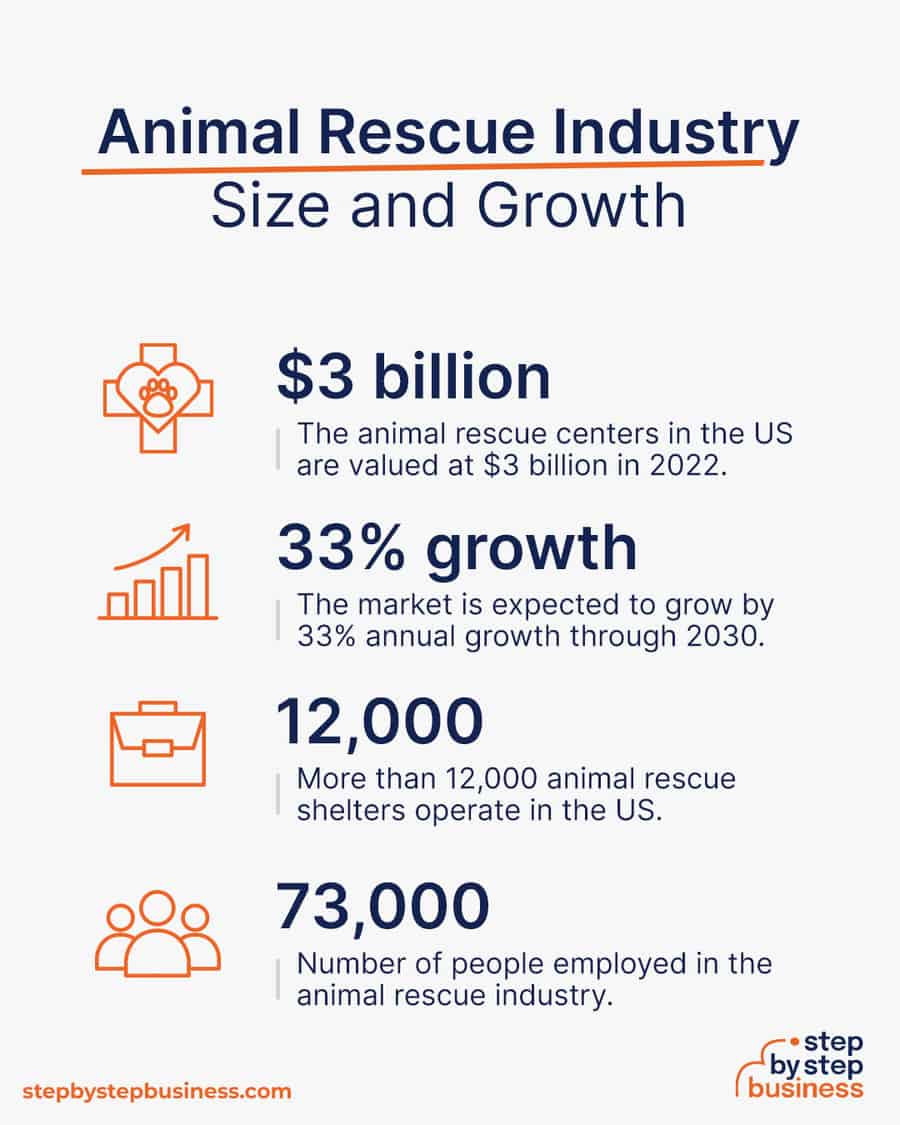
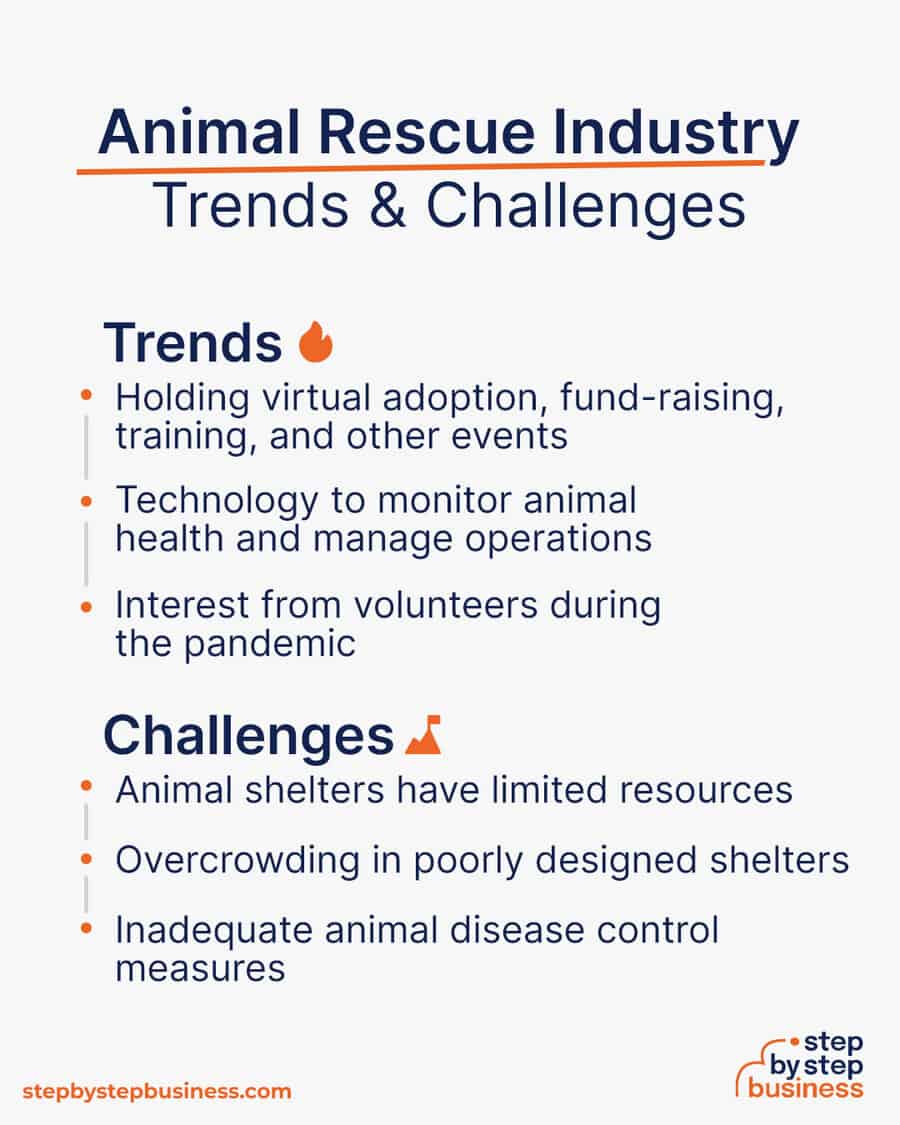
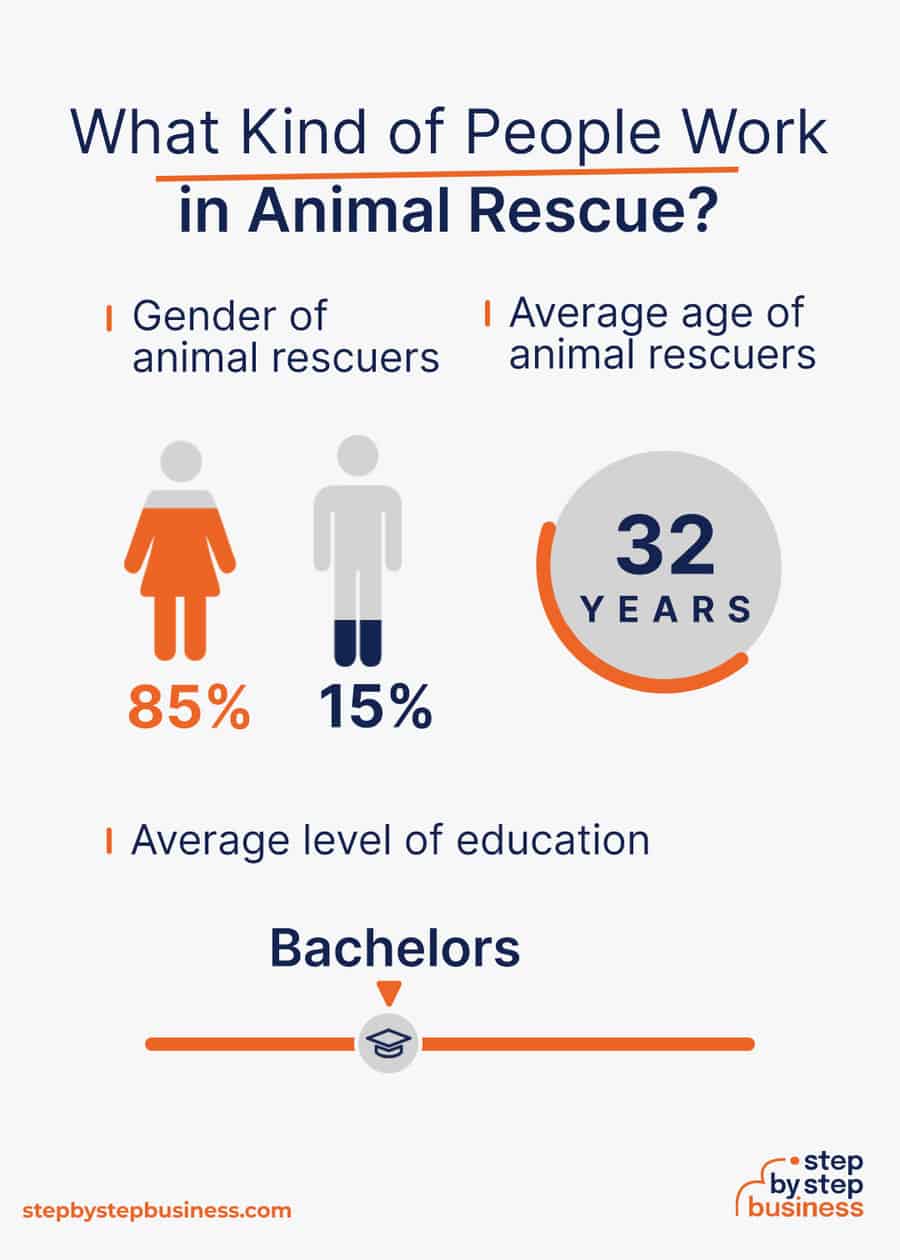
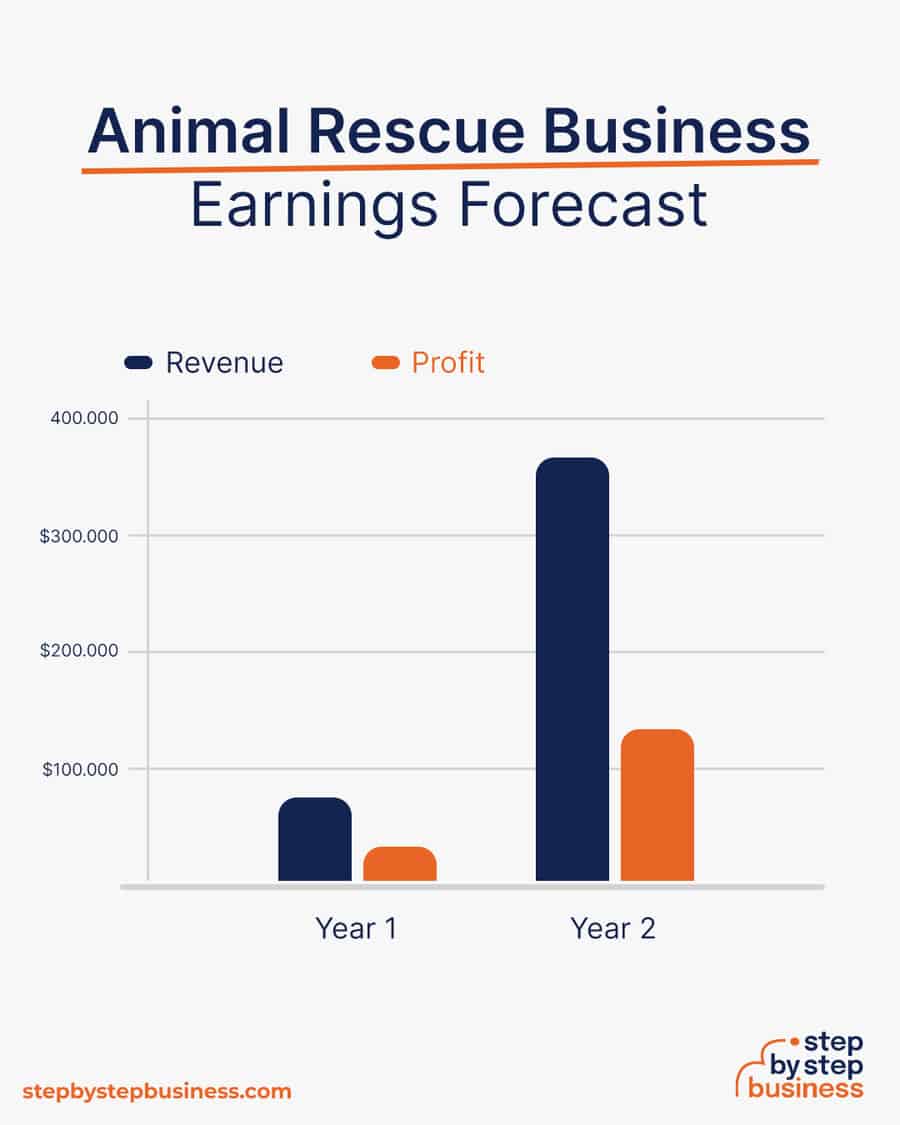

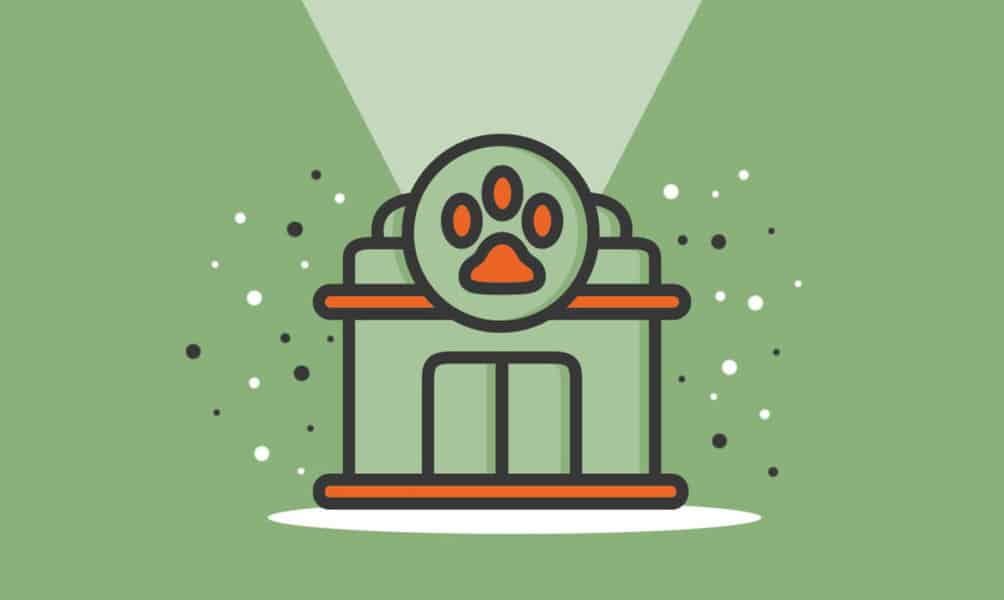


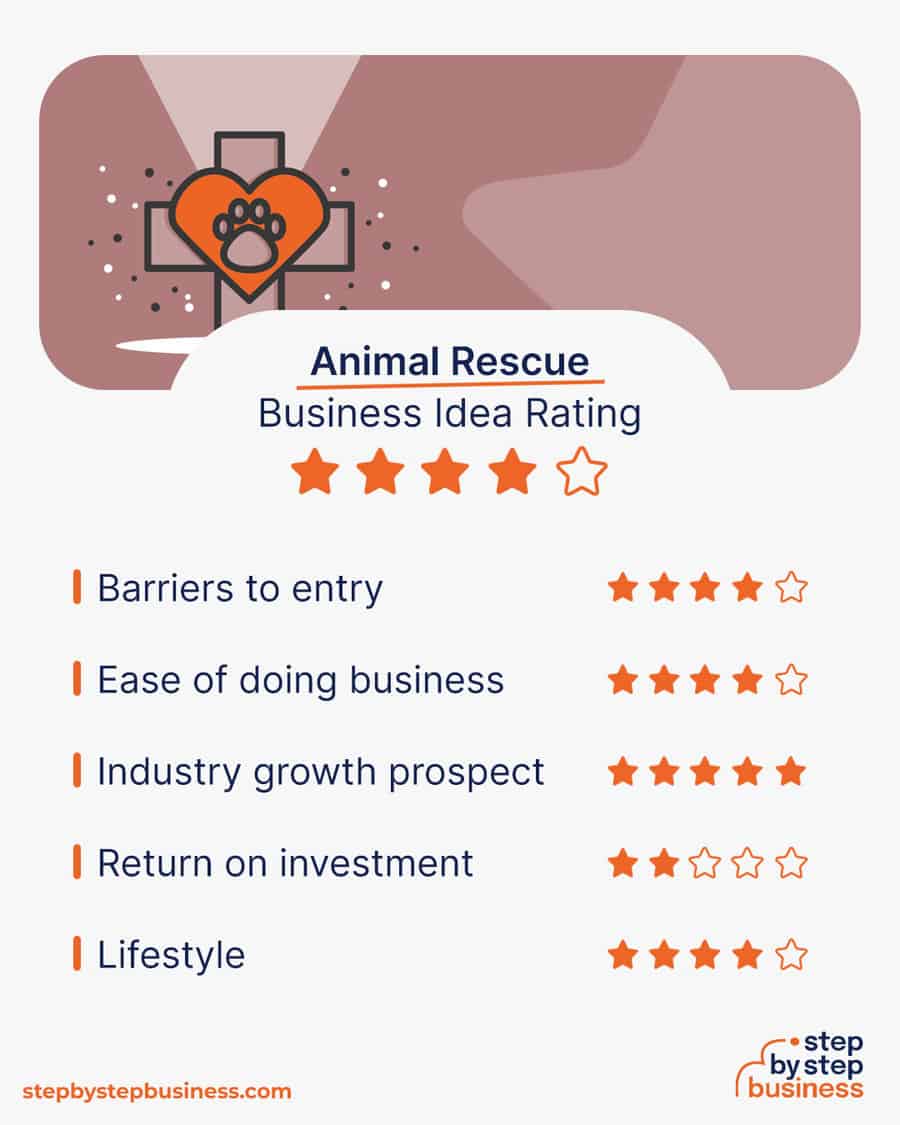













Comments